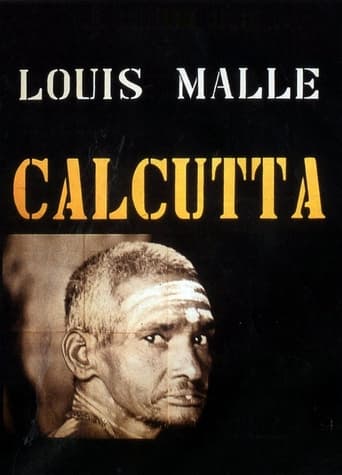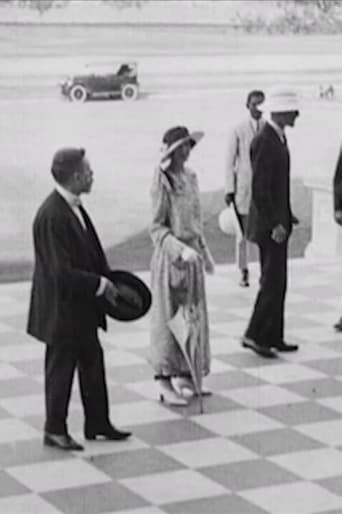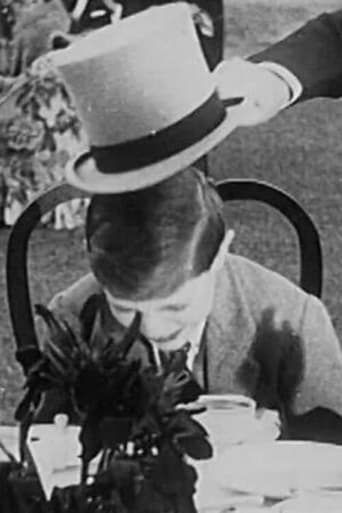PoppyTransfusion
Reading the IMDb reviews I was surprised that some were so negative about the film and cynical about its agenda. One review chose to attack the USA as part of their consideration of the film yet had the reviewer watched closely they would realise there was some irony in the fact that the soybean oil cans were labelled in 17 languages to reinforce that they had been donated by Americans. The film had lots of implicit criticism.The main criticisms of the film were reserved for British colonialism and the heritage it bequeathed, which was to be found alive and well in the economic elite of Calcutta. Most of the film showed ordinary people in varying states of poverty, working, cleaning and celebrating and/or worshipping. It offered special mention at times for the excluded, e.g. the lepers, the migrants from Bihari and Madras to name some. What this film does is include as many of the people who comprised the population of Calcutta in 1968 and it's not always a pretty sight. But the city is complex.Some favourite moments: One, the jute situation. Under British rule part of the then city grew the plants from which jute is made and the other part contained the factories for its processing. Post-colonialism and the eastern part of the city, containing the farmed jute plants, became Bangladesh, or East Bengal as it's referred to in the film. The factories remained in India. So Calcutta's municipality divided the land formerly used for rice giving half of it to grow jute plants. The consequence for the population was not enough rice to feed the population! A great illustration of the ludicrousness created by partition and the effects it has on the poor.Two, manual labour. It was plentiful in Calcutta at rock bottom costs and so the unions were keen to discourage technological advance as it would threaten employment. Meanwhile the people are working very hard for pittances. How would one resolve this? Well that's a hypothetical question as technology has advanced nonetheless.Three, the clay potter in one of Calcutta's slums. A moment of genuine and serene beauty; watching the man artfully spin his potter's wheel and then so deftly remove parts of the clay he's formed into perfect cups. The cups are then stored on the roof of the hut to dry out thereby providing a decorative temporary roof. Temporality was one of the spiritual themes of the film.Finally, another complaint in one of the reviews was that the film intruded on subjects' privacy. There were moments when a person spotted being filmed and tried to cover themselves. So there's some legitimacy to this criticism. BUT I wonder if the reviewer picked up this minor detail - and it was minor as most subjects were curious about the camera - because they did not want to see certain people in certain states. The camera in the film lingers on its subjects but it spent time looking with attention. Whether the attention was on faces and hands ravaged by leprosy, a man washing himself in public view, or guests at a bourgeois wedding eating. The camera attended to its subject.If you have the opportunity to see the film then take it, as it's not easy to get hold of. I have it as part of the Eclipse volume 2box set of Malle's documentaries. The set includes Malle's lengthy documentary called Phantom India. The footage he used in Calcutta was to form part of Phantom India but when he saw what he filmed he realised it was so compelling that it deserved to be a film in its own right.
museumofdave
You think you've got troubles? Spend a few hours trolling the crowded filth-infested lanes of Calcutta with Louis Malle's roving camera and take in the nightmarish reality that results from millions of people living in the filthiest of circumstances. Narration in this film is minimal, and images tell the story--whether pictures of the sick and dying stuffing their mouths in a death house or children rooting around in the muddy garbage with hogs, this powerful immersion in a city jammed with rootless humans struggling for survival is powerful and unrelenting.While the arc of a story does not exist, the tale of this city is shown in vivid clarity and Calcutta is not easily forgotten; it's amazing that the film was made forty years ago: could living conditions be any worse today? (One day later--out of curiosity I looked up present day Calcutta on Wikipedia--and was not surprised to find an entirely different picture of that immense metropolis on view--an excellent way to balance the "truth"of what appears to be an objective documentary).
Rodrigo Reyes
It's not a matter of pride so much as it is insecurity which leads people to be so defensive towards this film. In sociological terms, they are still playing the role of oppressed subjects. It is an outright denial of reality coupled with a love affair with a myth of identity that never existed in reality.Why must art be channeled into a half-baked political agenda? Louis Malle did not make it up, he just shot what he found. You must be ready to look at this film as a cultural artifact, as a work of art. Making a critique from a strict nationalistic point of view is less than superficial: it demonstrates a complete misunderstanding of what film-making is all about.In fact, look at the craft Malle used in this film. He avoided narration and let the events carry the film in a direct and simple way. The fact that it avoids narration or music help it to become an open film, one that invites reflection and thought from the viewer. But I guess there is only so much technique can achieve when people refuse to listen.Perhaps it is more comfortable to enjoy films about the nasty sides of other societies. Overwhelmingly, the reference for films is American Cinema. Look at polls of critics and directors: Citizen Kane is voted number one and often Godfather or Godfather II come in second. These films deal with the breakdown of American society in one way or the other, looking at it's most corrupt extremes. And in fact, both Godfather films are definitely among the most watched films in history, throughout the world.However, for the sake of decency and if national pride is to be preserved, than we ought to ban films like the Godfather and Calcutta altogether. We should take the historical example of those few intelligent regimes who went through a tremendous effort to control art in their societies, not only films, but also books and music and even painting. It is too easy to cite Hitler's Germany as an example, but the Soviet Union, Cuba, China, North Korea and many others fall into this list.
indiglo
This is one sick & dark Documentary! Seems like they were bent upon finding & filming all the Hell that lurks in any other place, here Calcutta! Now,that place has undergone a radical transformation, first-has got its original & proper non-Englished name- " Kolkata " ..& has now,got all its positivity & charms of a sparkling Big city-all for the Better! It was Feb'1968,when the film was shot & its now 2008, more than 40 years has elapsed & generations have changed & so has the city! To all apparent views, the documentary throughout,is very vague & highlights all the abject & absolute poverty in parts of the city without any justifiable reasons for the horrid truth & chaotic state of existence of the time.It is but a failure in finding to analyze the intricacies of the soul & mind of the great city striving to survive with its millions & exponentially growing populace for more than 300 yrs!Inspite of its chaotic portrayal & shock value, the film is incomplete,with it's skewed point of view like many other superfluous mindset & skin deep research of the white skinned western world, would so much want to believe! No pity for the others & to each Best of its own-the Great Grand Kolkata lives & breathes in full life in its very own wonderful World today!!!There are many a things that does NOT meets the eye & to find that hidden beauty there,give yourself a visit to "Kolkata".





